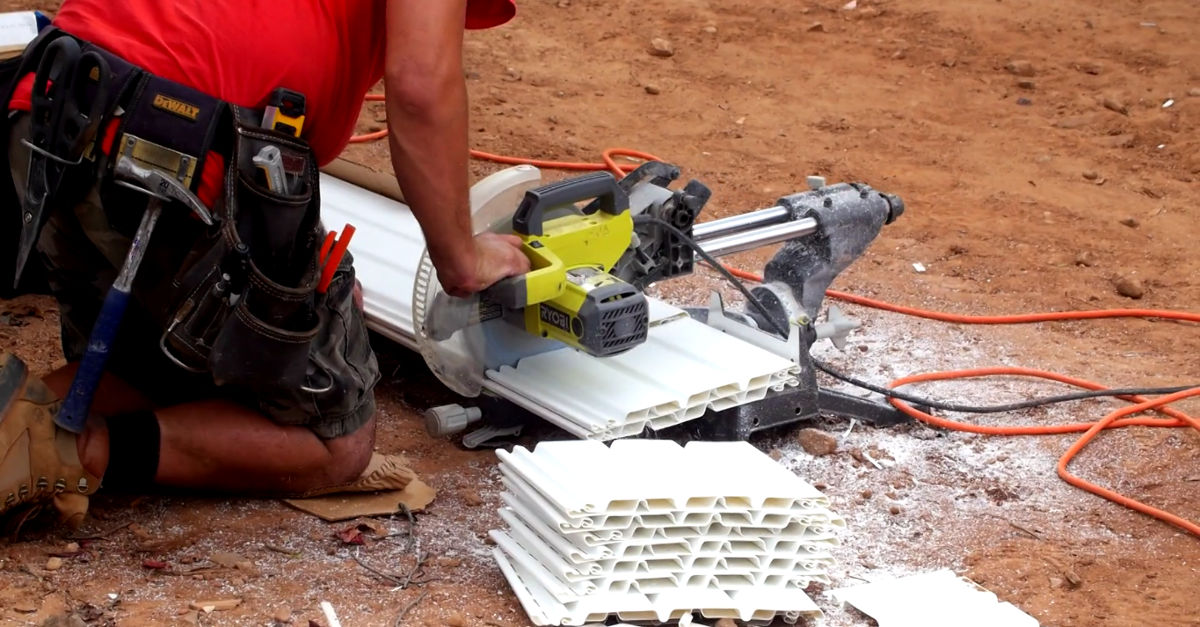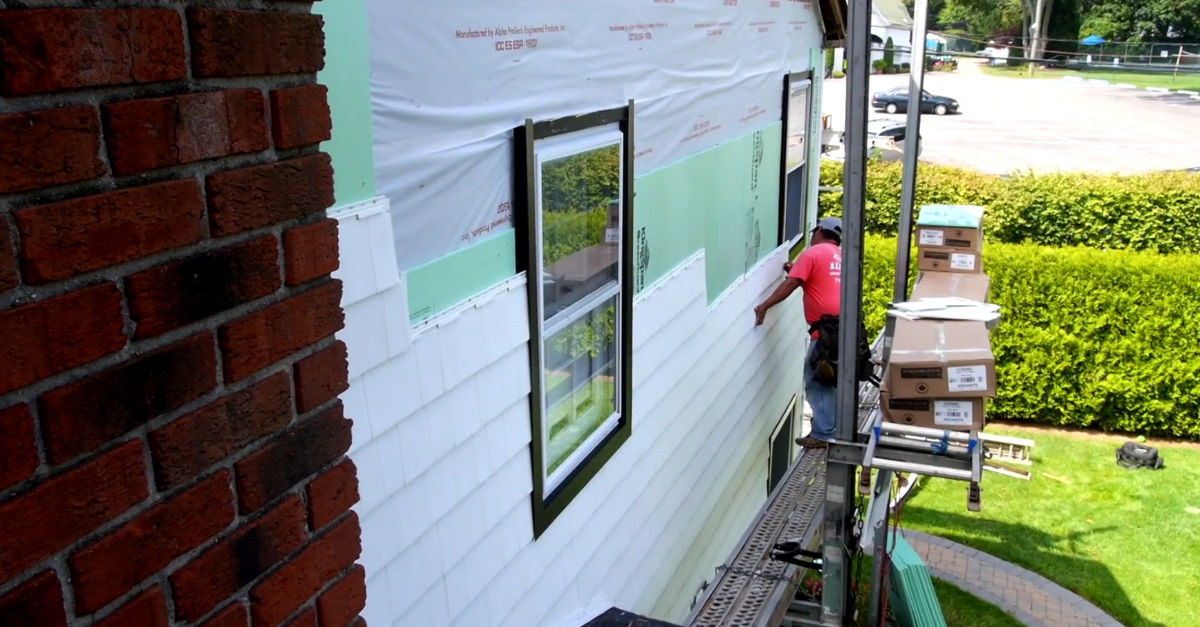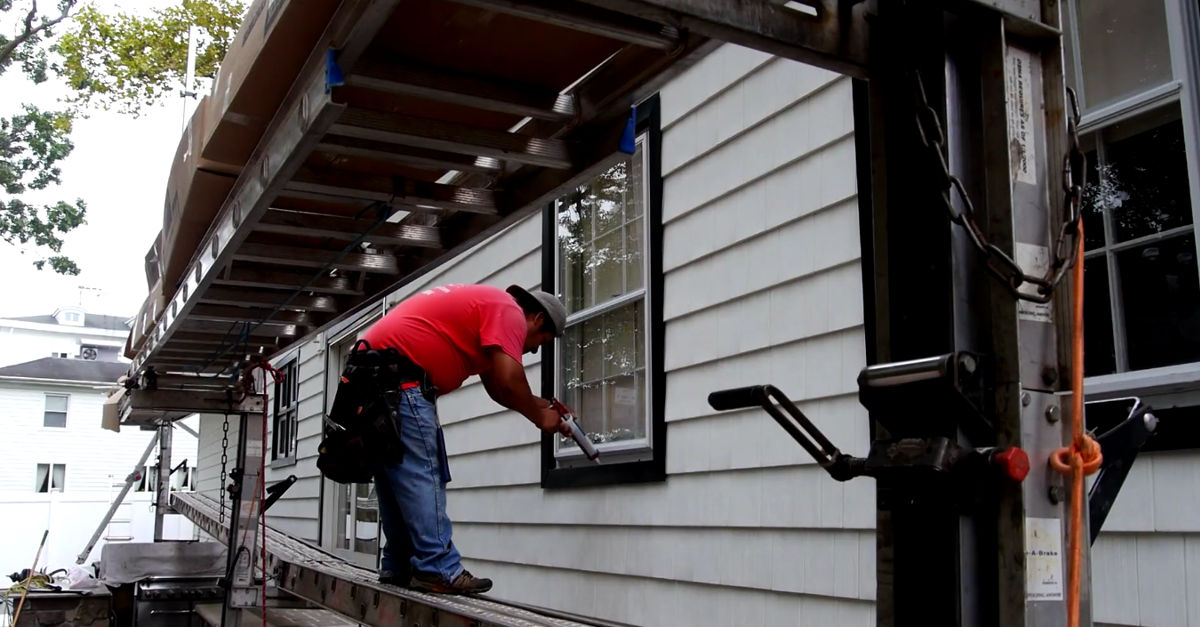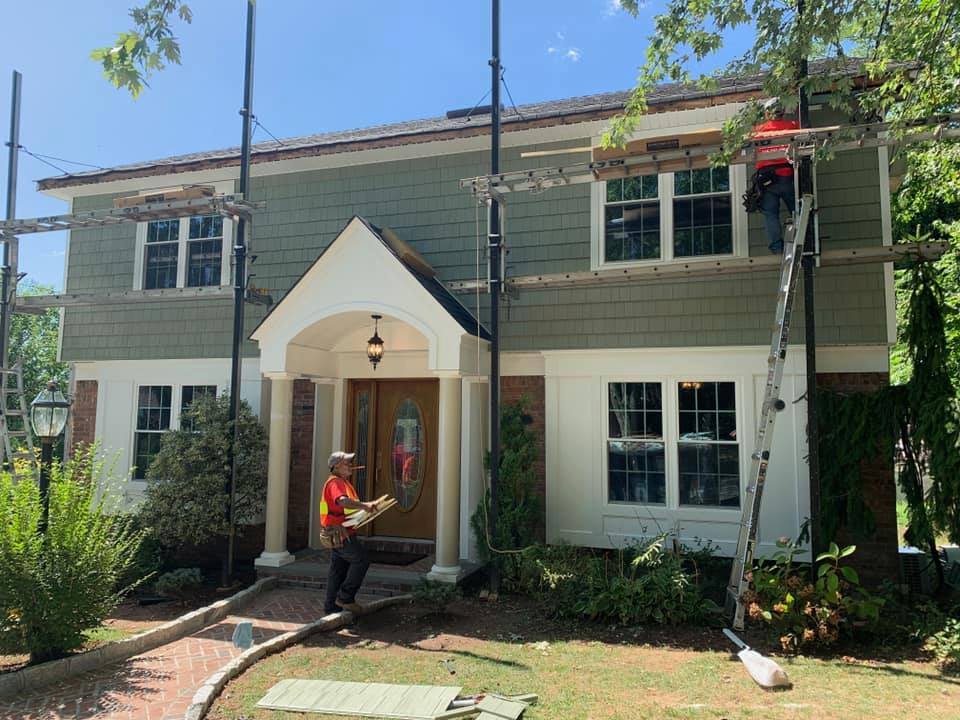… Plus, 5 tips on saving money on a vinyl siding replacement
The cost to replace siding on a house can vary widely, and if you haven’t done it in a while (or ever), you might find budgeting for this daunting. Fortunately, we have all the information you need to set a budget, vet siding contractors in your area, and make an informed choice when the time comes to replace the siding on your home.
5 key factors directly influence the cost to replace vinyl siding on a house
- Labor. Labor drives upward of 55 percent of the cost of a typical siding project. In our case, this proportion is a bit higher. That’s because, first, we’re very particular about who we hire. Our contractors and their work are closely vetted by manufacturers, resulting in our preferred status, which allows us to offer our customers exclusive products and pricing. This is no rubber stamp. It means they’ve shown installation mastery beyond siding industry standards, and it allows us to offer the highest warranty protection available on materials and labor. Paying living wages is also about doing the right thing for our community—plus, it ensures accountability, pride, and helps us retain experienced workers. While you may find contractors that are less expensive, be cautious of them sacrificing quality with inexperienced labor.
- Size and layout. Obviously, the size of your house will influence the cost of both materials and labor, but so will the layout. It will cost more to replace siding on a two-story house than a ranch house because that requires extra equipment and setup, such as scaffolding, which adds to the cost of labor.
- Materials. Several factors influence the cost of materials:
- Trim/architecture. The complexity of your home is a key factor here. The more windows you have, and the more complex your exterior design is, the greater the cost. That’s because every window, eave, gable, and corner requires extra materials and craftsmanship. The cost of trim is also greater than siding on a square foot basis. So siding a rectangular home with a few large windows will cost less than siding a home with a complex architecture and many windows.
- Thickness. Like looking at a car whose cost can greatly vary from base to premium to luxury models, siding is available in grades ranging from the entry-level builder grade to higher quality, thicker vinyl. Siding panels range in thickness from .040 gauge to .050 gauge. Vinyl siding expands and contracts in response to temperature fluctuations, and thicker panels are more stable, so they last longer. But of course, they cost more.
That said, we offer a lifetime limited warranty on all materials, including siding, regardless of the brand or grade.
- Type of siding (vinyl and beyond). In addition to different brands of vinyl siding, that offer various styles and colors, many homeowners opt for alternative siding materials including shake, board and batten, fiber cement, and PVC siding. This is a matter of preference and budget. These alternatives can be very attractive for the right style of home, they’re durable, and frankly, they merit their own discussion. We’re mentioning them here because they’re relevant alternatives to vinyl siding. Learn more here.
- Removal/disposal. Be careful! Contractors often omit this from estimates. Removal/hauling fees for old siding typically range from $1,000 to $3,000. At B&B Siding and Roofing, this is included in our estimate.
Related: What to Look for in a Siding or Roofing Estimate
Additional materials, cost, and value considerations
Everyone deserves a home that’s cool in the summer and warm in the winter. Not to mention, lower utility bills. In many cases, a siding replacement is a great opportunity for a cost-effective home insulation upgrade. This can add around 6% to 8% to the cost of materials and labor, but it is well worth it if it improves the efficiency and comfort of your home. If the added cost seems beyond your budget at first glimpse, you may be glad to know we offer 12 months of interest-free financing through Wells Fargo, or 120 months with GreenSky at 9.99%. Because sometimes the sticking point isn’t how much you pay, it’s when you pay.
Related: Paying for Home Renovations with a Refi Can Be a Great Deal: refinancing your home to pay for upgrades is another comparatively easy option. Here’s what you need to know.
The average cost to replace siding, by the numbers
- At the time of this post, the cost to replace siding in our region ranges from $16,000 to $30,000. (For long-lasting premium materials such as Hardie and composite siding the high end can be upwards of $50,000+.)
- On a square foot basis, expect to pay around $7.50-$15.00 per square foot depending on the house and product.
- Removal and disposal of old siding tend to cost $1,000 to $3,000. (Again, this significant cost is often excluded from estimates.)
- Finally, citing data from the National Association of Realtors, a vinyl siding replacement will return about 75 cents per dollar at the time you sell. So for example, spending $20,000 on new siding will add on average about $15,000 to the price you’ll get at the time you sell. That makes it one of the highest value upgrades you can get as a homeowner.
Savings tips, financing, and warranties
- Get multiple quotes. We recommend that you get as many quotes as you need to feel comfortable. We acknowledge this is necessary for many homeowners and have made it one of our top goals to empower homeowners to successfully work with a contractor, regardless of who they choose. When it comes to any home renovation, you want to make the right choice and get a square deal.
- The greatest cost isn’t a line item. As we’ve written before, procrastination is the greatest cost on many siding replacements. That’s because the cost of labor and materials is trending sharply upward, has been for years, and will likely continue. According to HomeAdvisor, the cost of siding jobs has increased by 5% to 10% in 2021, after also increasing sharply in 2020. There are a number of reasons for this, linked to the pandemic, extreme weather, material pricing, and simple demand. For instance, supply chain disruptions have increased manufacturing costs and lead times. The cost to hire experienced and manufacturer-certified installers have also increased.Procrastination carries other costs, too. Siding that’s damaged can often result in underlying structural damage and mold. These things, often unseen, compound over time, adding cost upon cost.
- Certification and warranty protection. Because a siding replacement is a significant investment, it’s all the more important to choose a certified, reliable contractor with the highest warranty protection available. We offer a Lifetime Material and Labor Warranty on our full siding installations. Don’t accept anything less. You can read about how warranties and certification work here, and how to vet contractors here.
- Timing. If it can wait, scheduling your siding replacement for the off-season (winter and early spring) may allow you to secure an off-season discount.
Now you know what factors into the cost to replace siding, what kind of upgrades you’ll want to consider, and what to watch out for. We hope that this information helps you find the siding solution best for you and the stress-free experience you deserve.
Helping people feel more comfortable and content in their homes is what makes us tick. We’re here to answer your questions, at no cost and without obligation.
If you’re collecting bids on roofing or siding repairs, make sure you read this first: 9 Questions To Ask When Hiring A Siding and Roofing Contractor.





